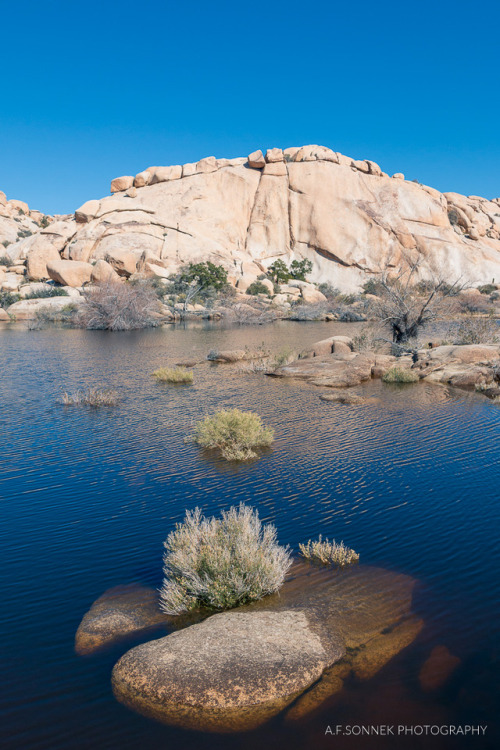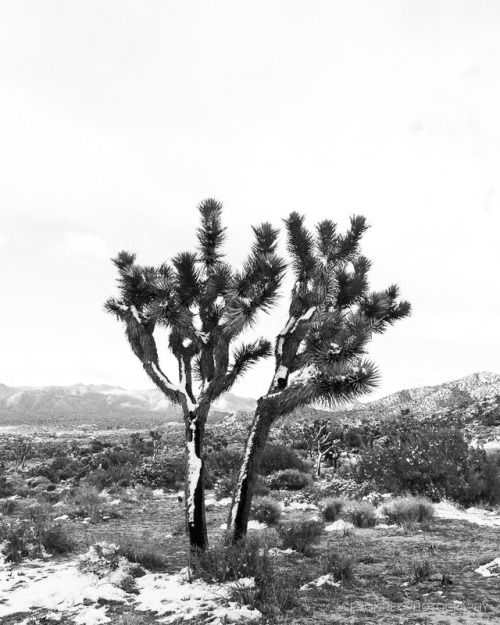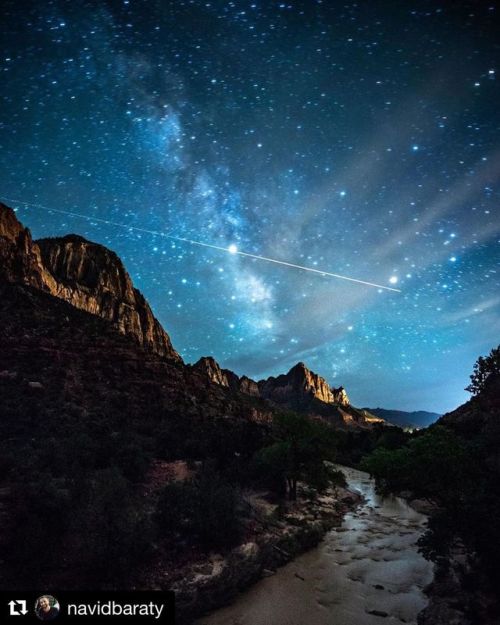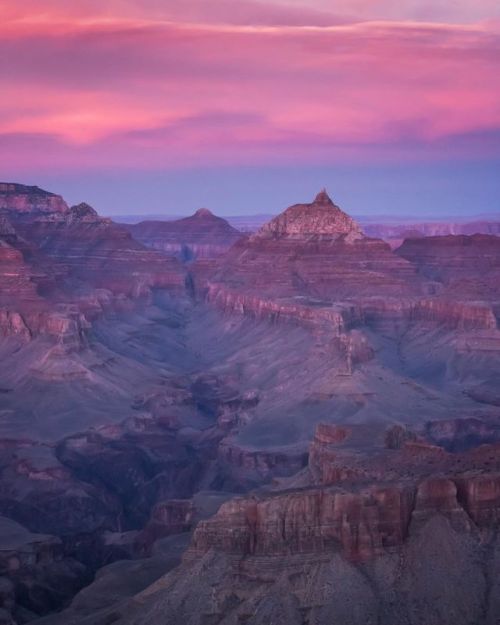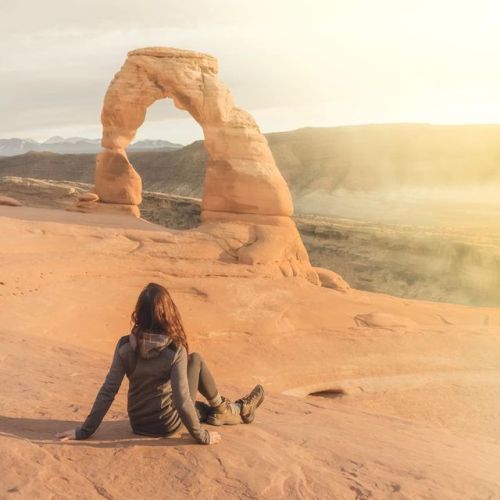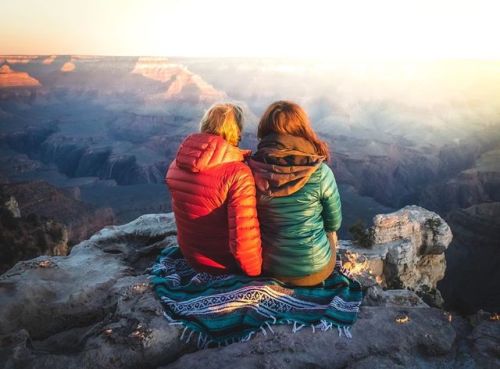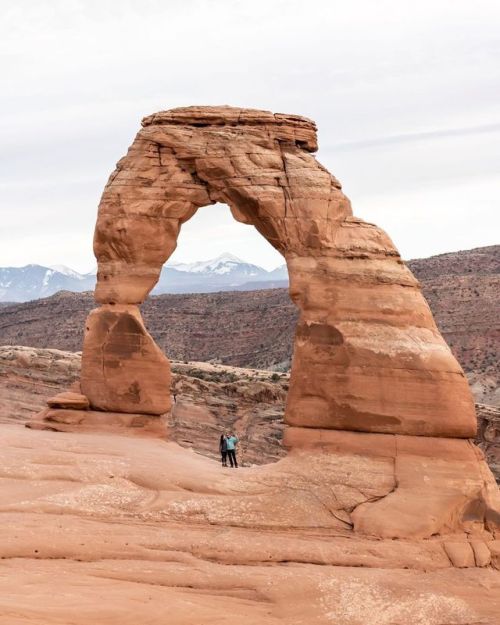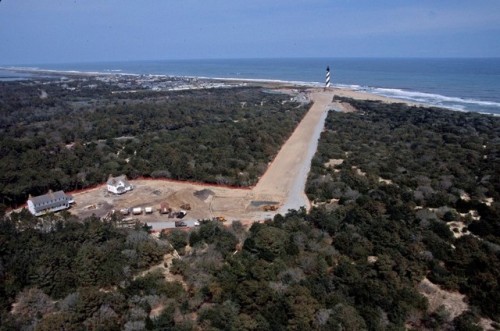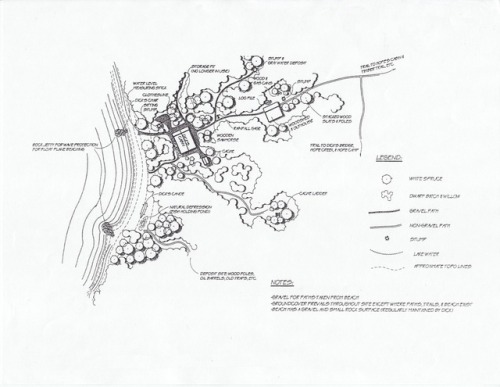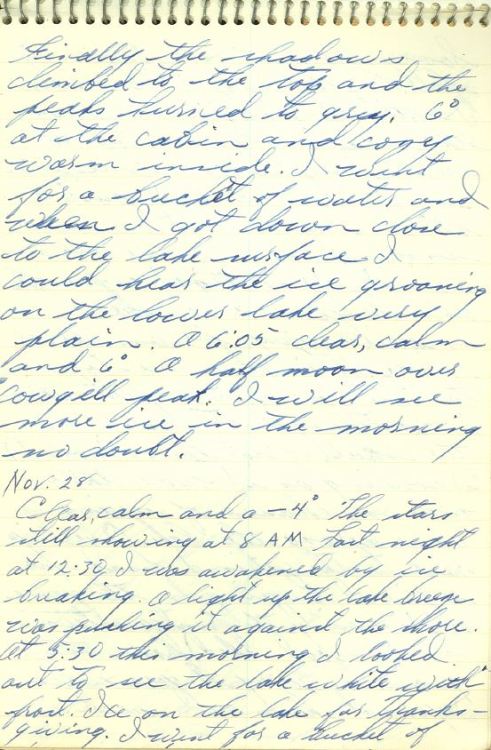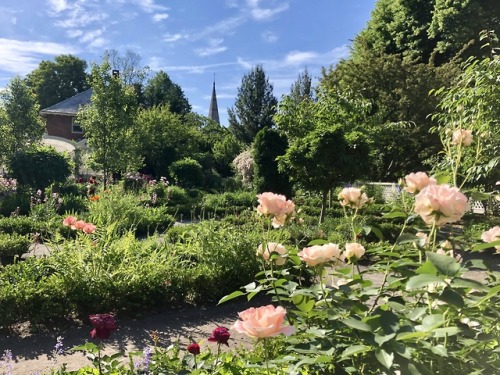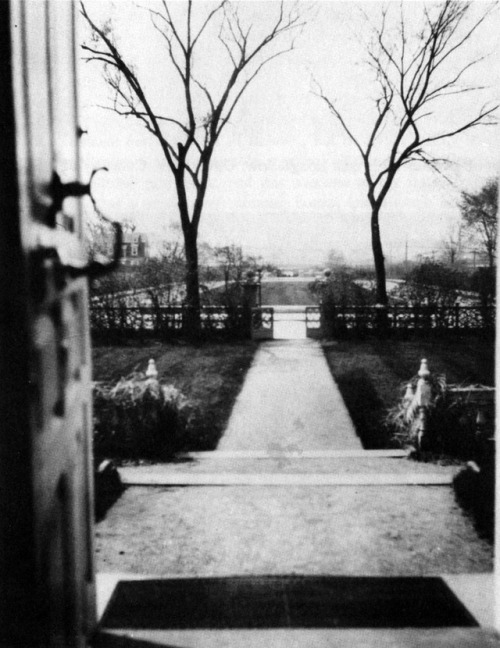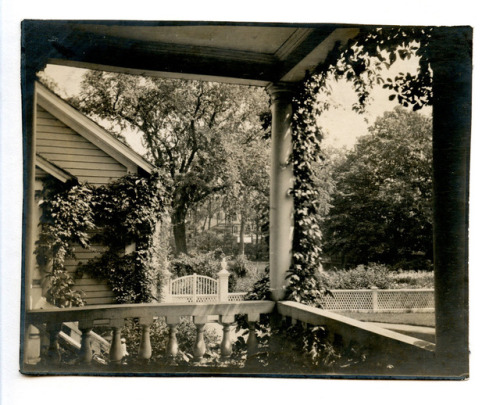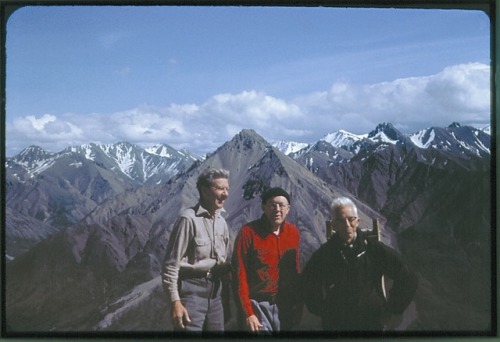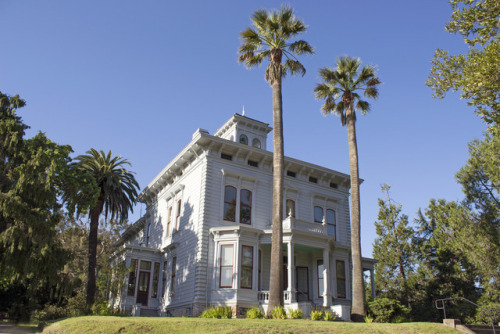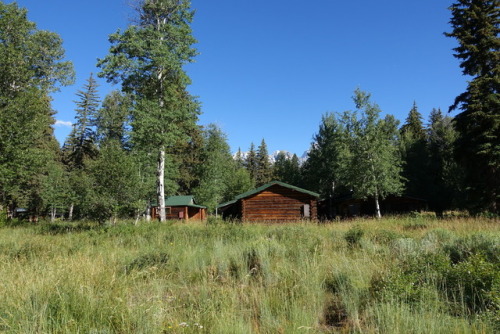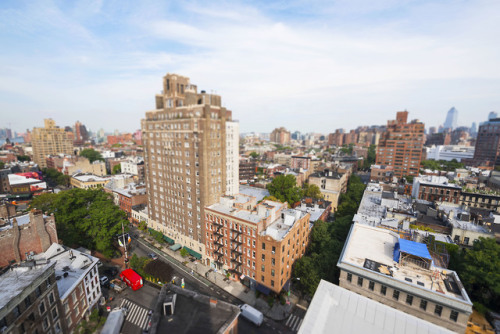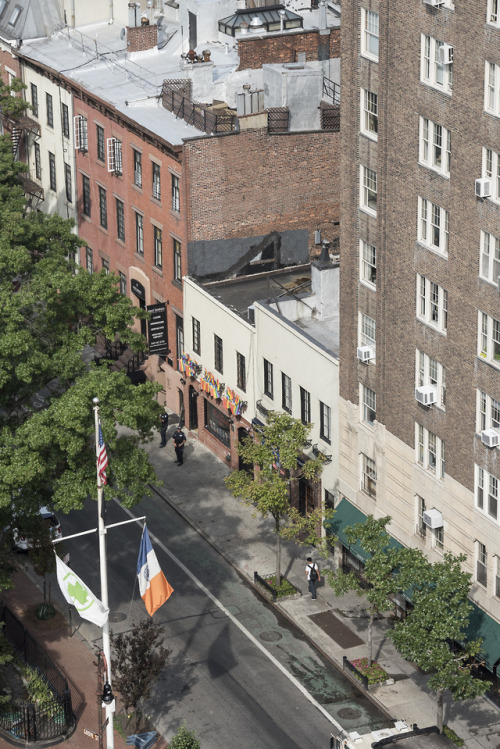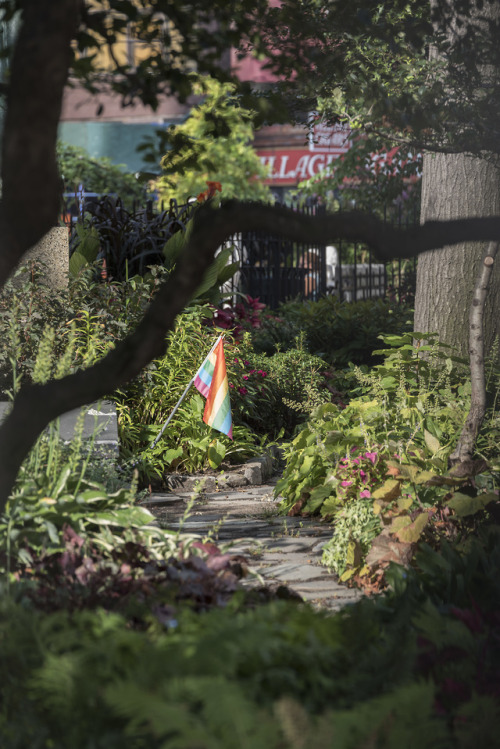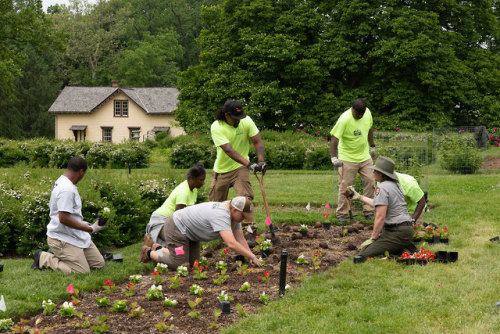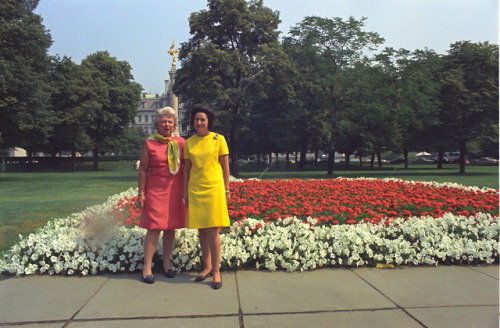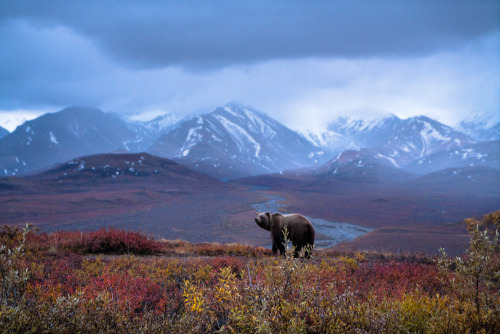#findyourpark
Beautiful blue skies (not enhanced at all!) in Joshua Tree National Park. Heavy rains in the days before filled the Barker Dam Reservoir.
Post link
Just after sunset in Joshua Tree National Park, a young tree catches the apenglow near Skull Rock.
Post link
Snow in upper elevations of Joshua Tree National Park after record setting winter storms crossed Southern California in February.
Post link
#Repost @navidbaraty
・・・
Night watcher
.
.
.
#zion #zionnationalpark #travel #utah #nightsky #travelphotographer #visitutah #nationalpark #findyourpark #astronomy #longexposure #discoverearth #tlpicks #earthcapture #earthofficial #earthfocus #natgeotravel #visualsofearth #usinterior #bbctravel #lr_vibrant #nikonnofilter #milkyway #nightphotography #imaginarymagnitude #beautifuldestinations #offthegrid
https://www.instagram.com/p/B2BAnnhhW4R/?igshid=17lp3an6sher3
Post link
In southwest Colorado less than an hour away from the city of Durango is a mysterious group of cliff dwellings in the canyons of the table top mesas. These are the best preserved Ancestral Puebloan archaeological sites in the United states.
The national park site for Mesa Verde does an amazing job at introducing the wonder of the park.
https://www.nps.gov/meve/index.htm
I arrived at the park May 10th 2018 and stayed at the Morefield campground inside the national park for two nights. Its a wonderful campground. Most the sites will only hold one large tent or two small two-man tents. It has free showers, flushable toilets, and coin laundry.
On May 11th we explore the park. You’re allowed to buy tickets(they are only $5 a person) to take a tour into the cliff dwellings which are lead by a ranger. The only tour available was for the balcony house. I recommend taking one of these tours because you’re not allowed in the dwellings unless with a ranger. Its only an hour and worth your time. It is a little difficult since you have two climb one 30ft ladder, two 15ft ladders, and crawl through a claustrophobic tunnel. Regardless of those few precautions its an incredible feelings to stand in the dwelling.
You’ll be spending the day learning about the history of the pueblo people and exploring their past. When it comes to hiking there isn’t much. Its a very spiritual place.
Photos to be posted. Message me with any questions about the park.
Adventure on!
Happy 100 @grandcanyonnps ✨ I’ve only been twice, but every time I saw it each of those trips it continued to amaze me. Can’t wait for the next trip. #grandcanyoncentennial #findyourpark #desertsunset (at Grand Canyon National Park)
https://www.instagram.com/p/BuWyFRPF7Km/?utm_source=ig_tumblr_share&igshid=1tnvxu3q0zabr
Post link
I miss the desert…hoping to get out here to see the Moab area with snow before work starts up. #findyourpark #delicatearch #archesnationalpark (at Arches National Park)
https://www.instagram.com/p/BuKP3KTFUgz/?utm_source=ig_tumblr_share&igshid=udsg25mbwz6v
Post link
Some Haleakalā magic for your Valentine’s Day #findyourpark #haleakalā #gohawaii (at Haleakala National Park)
https://www.instagram.com/p/Bt4JnaLFus3/?utm_source=ig_tumblr_share&igshid=5bt912jmnn5u
Post link
Next new park trip planned. Olympic National Park in April for my birthday. Olympic’s been number one on my list for a while….rainforest, waterfalls, ocean, rocky shores, tide pools, and maybe even see some grey whales. #findyourpark #grandcanyon #nationalparklife (at Grand Canyon National Park)
https://www.instagram.com/p/BtmKdX8lhhR/?utm_source=ig_tumblr_share&igshid=1811l72esjjfy
Post link
On the way to Hawaii with this guy. Sparse posting til the 19th to disconnect and enjoy the islands
•
•
•
•
•
#findyourpark #delicatearch #FoCoRepresentBro @danquilo (at Arches National Park)
https://www.instagram.com/p/BsWbRxohRbD/?utm_source=ig_tumblr_share&igshid=4buzyejikzck
Post link
NEOWISE - WE HAVE A VISITOR
After a week of frantic searching, glorious but impeding sunsets, and scouring every weather and atmospheric resource imaginable, the conditions were right and I finally was able to see Comet NEOWISE in the skies above Everglades National Park. I don’t think I’ve ever experienced anything quite like this. Seeing a natural phenomenon that only occurs once every 6800 years and setting eyes on an…

#otd, 100 years ago, Theodore Roosevelt died at @sagamorehillnhs, in New York. When he ascended to the presidency in 1901 he was the youngest person to do so and ushered in a progressive era of reform. Part of that wave of reform was his work in preserving the scenic and historic wonders of this country as part of the future National Park Service. In Teddy’s words: “Leave it [wilderness] as it is. You cannot improve on it. The ages have been at work on it, and man can only mar it. What you can do is to keep it for your children, and for all who come after you, as the one great sight which every American… should see.“ To me, he remains the perfect example of a progressive American president who worked toward the common good. He is a complicated figure, for sure, but his contributions to enshrining American identity in wilderness are incomparable to any other American politician. Thank you, Teddy.
:
:
#SagamoreHill #findyourpark #SagamoreHillNationalHistoricSite #Sagamore #Roosevelt #TeddyRoosevelt #TheodoreRoosevelt #NewYork #LongIsland #FindYourPark #GoParks #usinterior #experienceyouramerica #americasbestidea #protectpubliclands #travel #protectingparks #americanhistory #natparkexplorer #optoutside #thenationalparkspass #history #monumentsforall #sharetheexperience #nationalpark #nationalparkgeek #ibrakeforbrownsigns #nationalparkobsessed
:
:
Sagamore Hill is probably my favorite “Presidential Home” or “Historical Home” unit in the NPS. The tour is spectacular there and everything is wonderfully preserved. There’s nothing quite like standing in Teddy’s office or Grand Hall and seeing his belongings and books and imagining him entertaining and talking to John Muir in that very room. (at Sagamore Hill National Historic Site)
https://www.instagram.com/p/BsTXY-cnmkc/?utm_source=ig_tumblr_share&igshid=rsrba5wsvrzt
Post link
Happy #NationalBirdDay! Bird watching is one of my pastimes and living next to @evergladesnps makes that endeavor all the more fruitful. I don’t think it’s a surprise to anyone that EVER’s Barred Owls are among my favorite subjects to photograph, among others. When I was in 4th grade I wanted to be an ornithologist. 20 years later…. it didn’t exactly happen but I’m still happy that my love of owls endures.
:
:
#Everglades #evergladesnp #evergladesnationalpark #evergladesnps #miami #florida #igersenp #igersbigcypress #FindYourPark #GoParks #usinterior #experienceyouramerica #americasbestidea #protectpubliclands #protectingparks #naturephotousa #natparkexplorer #optoutside #monumentsforall #sharetheexperience #nationalpark #nationalparkgeek #ibrakeforbrownsigns #nationalparkobsessed #owl #owls #barredowl #owlsofinstagram #audobonsociety (at Pahayokee Trail Everglades)
https://www.instagram.com/p/BsQYeHNne-M/?utm_source=ig_tumblr_share&igshid=1ed7bhyww09rf
Post link
Hal Canyon
:
:
#arches #FindYourPark #archesnationalpark #archesNPS #moab #utah #moahutah #visitutah #discoverutah #utahrocks #FindYourPark #GoParks #usinterior #experienceyouramerica #americasbestidea #protectpubliclands #wnpa1938 #protectingparks #naturephotousa #natparkexplorer #optoutside #thenationalparkspass #findyourway #monumentsforall #sharetheexperience #nationalpark #nationalparkgeek #ibrakeforbrownsigns #nationalparkobsessed (at Colorado Riverway Recreation Area)
https://www.instagram.com/p/BsEva4un8fz/?utm_source=ig_tumblr_share&igshid=1wyx0y5gxdy0
Post link
A Landscape of Change: Cape Hatteras Light Station
Twenty years ago, in the summer of 1999, the Cape Hatteras Light Station was moved 2,900 feet from the spot where it had stood since 1870.
As the natural process of shoreline erosion transformed this dynamic coastal environment, the tallest brick lighthouse in the United States now stood dangerously close to the ocean’s edge.
The remarkable undertaking including efforts to protect the structures, maintain the coastal setting of the original site, and preserve the original orientation to the shoreline and spatial arrangement of historic structures in the landscape.
Discover more about the transformation and preservation of this cultural landscape: Landscapes of Change: Cape Hatteras Lighthouse
- Photo album of the 1999 Cape Hatteras Light Station move
- Cape Hatteras Light Station Cultural Landscape Report
- Cape Hatteras Light Station Cultural Landscape Inventory
- Cape Hatteras National Seashore website
- More about cultural landscapes
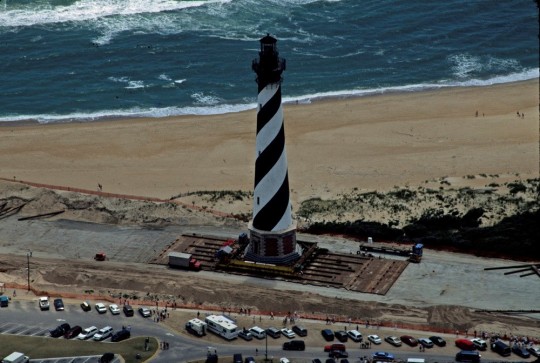
Driving the lighthouse along the beach to its new location on June 24, 1999 (NPS).
Post link
“My plastic water bucket dripping a bit so I mixed up a little epoxy, which is the one item more than anything else that holds ‘One Man’s Wilderness’ together.”
- Richard Proenneke, March 11, 1978, in More Readings from One Man’s Wilderness: The Journals of Richard L. Proenneke, 1974-1980 (p. 258)
Landscapes of Literature: Richard Proenneke
Richard “Dick” Proenneke built his cabin on the shore of Upper Twin Lake during the summers of 1967 and 1968. While it wasn’t the first or the largest cabin ever to be constructed in the Alaskan Bush, it stands out for its remarkable craftsmanship and for his documentation of the construction process.

Richard Proenneke at Snipe Lake filming movie clips in 1975. He and his brother Raymond flew there in the J3 Cub. (Photo courtesy of Raymond Proenneke, from NPS / Lake Clark National Park & Preserve website).
Proenneke built an elevated log cache, a combined woodshed/outhouse, and constructed the stone fireplace in the cabin by hand. His building style responded to the unique area and was intended to be both aesthetically appealing and functional for year-round living at Upper Twin Lake.
Proenneke lived in the cabin for 30 years without electricity, running water, a telephone, or other modern conveniences. Despite his remote location and fierce independence, he did not live removed from society. Proenneke maintained friendships, wrote letters, and interacted with pilots, fishermen, neighbors, and park rangers.
He chronicled his experiences and observations at Twin Lakes through correspondence, annotated calendars and maps, films, and journals. He always tacked a pin in a map before he would set out hiking, the marker showing where he intended to go and the holes across the map’s surface telling of past destinations.
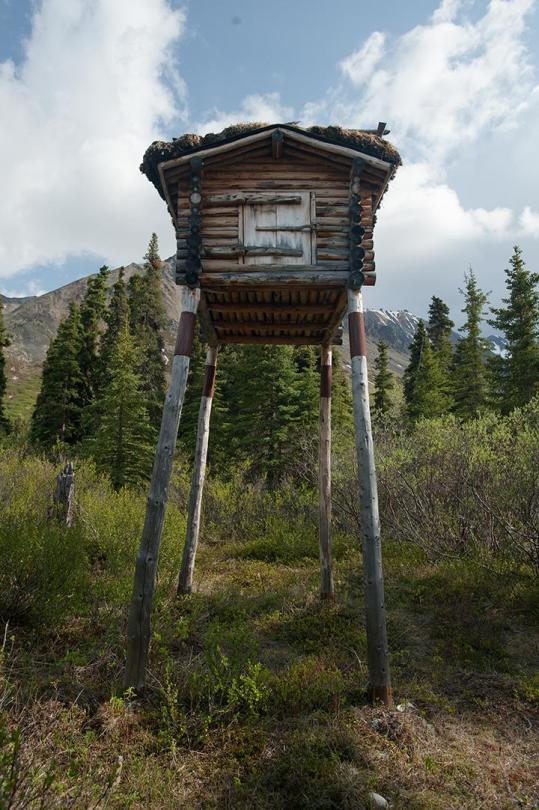
Proenneke used the elevated cache to store various goods, including flour, candy, clothing, filming equipment, and aircraft parts (NPS).
Richard Proenneke was also intimately connected to his natural surroundings. As a result of his observations and advocacy, he became well known during the Alaska National Interest Lands Conservation Act (ANILCA) debate of the 1970s, inspiring several books and films and encouraging public support for wild lands in Alaska.
A strong proponent of preservation of the Twin Lakes-Lake Clark country, he gradually came to support the establishment of Lake Clark National Park and Preserve. He became a volunteer with the park, helping NPS personnel to monitor weather, collect botanical specimens, assist with aerial wildlife counts, and coordinate float plane pickups between rangers and visitors.

Icicles frame a view of the mountains and lake visible from Richard Proenneke’s cabin (NPS).
Dick Proenneke kept a journal from his first visit to Twin Lakes in 1962. The publication of some of those journals in 1973 as One Man’s Wilderness (edited by Sam Keith) was largely responsible for bringing wider public recognition to Proenneke and Twin Lakes. Eventually, additional journals were published and documentary profiles were created using Proenneke’s own film footage, showing his relationship to the landscape.
Watch it:
In 2000, he and his brother, Raymond, donated all his journals to Lake Clark National Park and Preserve.
Proenneke’s voice was influential in shaping the preservation of wilderness in Alaska. His words and films reflect his pragmatism and care for this place and profoundly shaped public awareness of the values of Alaska’s wilderness. Richard Proenneke died in 2003, but the values of wilderness preservation and resource protection that he embodied live on through his journal entries and in the features of the cultural landscape.
Learn More
- To find journals, video, landscape details, and inspiration from Dick Proenneke, start here at the Lake Clark National Park & Preserve website: Richard L Proenneke
- Virtual Tour: Explore Lake Clark Wilderness at Upper Twin Lake
- More about ANILCA and Alaska Wilderness (NPS Alaska Nature and Science)
- What are cultural landscapes?
Post link
Landscapes of Literature: Henry Wadsworth Longfellow
Tucked away in a pleasant, residential neighborhood, not too far away from Harvard University in Cambridge, Massachusetts, is Longfellow House-Washington’s Headquarters National Historic Site.

Each spring, lilacs bloom on the hedges surrounding Longfellow House-Washington’s Headquarters National Historic Site (NPS).
This site preserves an elegant house which served as headquarters for General George Washington during the Siege of Boston and as the home of Henry Wadsworth Longfellow (1807 -1882), one of the most famous American poets of the 1800s. For 45 years, Longfellow lived here with his family in the Georgian style mansion, looking out upon picturesque estate grounds that included a formal garden, woodland walk, lilacs, elm trees at the front of the house, a view to the Charles River, and outbuildings like the carriage house.
River! that in silence windest
Through the meadows, bright and free,
Till at length thy rest thou findest
In the bosom of the sea!
Four long years of mingled feeling,
Half in rest, and half in strife,
I have seen thy waters stealing
Onward, like the stream of life.
Thou hast taught me, Silent River!
Many a lesson, deep and long;
Thou hast been a generous giver;
I can give thee but a song.
Oft in sadness and in illness,
I have watched thy current glide,
Till the beauty of its stillness
Overflowed me, like a tide.
– excerpt from “To the River Charles” by Henry Wadsworth Longfellow, in Ballads and Other Poems(1842)
While in residence, he published eleven poetry collections, two novels, several plays, three epic poems, including Paul Revere’s Ride,The Village Blacksmith,Evangeline,The Song of Hiawatha, and notable translations such as Dante Alighieri’s Divine Comedy.
The Formal Garden
Longfellow and his daughter, Alice, shared an interest in landscape architecture, represented by the formal grounds, including a garden on the northeast end of the property which they carefully designed over time. Longfellow imported a variety of exotic evergreen trees from as far as the Himalayas, Northern Europe, and Oregon with help from renowned botanist Asa Gray.
In 1847, he sought the assistance of landscape architect Richard Dolben to create a new designed garden. Following Longfellow’s death, the formal garden was renovated by his daughter to its current Colonial Revival layout in 1904-05 and 1925.
In 2005-06, the garden was restored based on historical documentation in the site’s archives, largely based on the earlier 1925 rehabilitation by noted landscape architect Ellen Shipman. A large European linden stands in the east lawn toward the rear of the house, where this garden remains on the footprint of the original 1847 design.
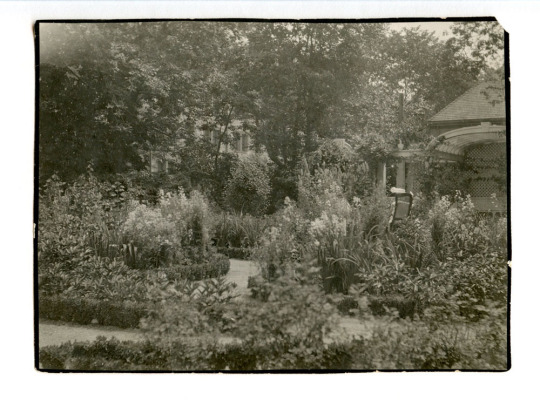
Formal garden, looking northwest toward arbor. Wheelchair is visible in garden with occupant (possibly Alice Longfellow, 1888-1928), ca. 1904-C1928. The arbor was added by Martha Brookes Hutcheson (1904) and removed (1932/34). (National Park Service / Longfellow House Washington’s Headquarters, LONG 7503).
Expressions
From the time that he first starting renting two rooms on the house’s second floor, the letters and journals of Henry Wadsworth Longfellow expressed that the history and character of the grounds were a source of both pleasure and inspiration for him.
In one journal entry, he writes, “How glorious these Spring mornings are! I sit by an open window and inhale the pure morning air, and feel how delightful it is to live! Peach, pear and cherry trees are all in blossom together in the garden.” [1]
Later, in an 1843 letter to his father, Longfellow described the past and future of the landscape:
We have purchased a mansion here, built before the Revolution, and occupied by Washington as his Headquarters when the American Army was at Cambridge. It is a fine old house and I have a strong attachment from having lived in it since I first came to Cambridge. With it are five acres of land. The Charles River winds through the meadows in front and in the rear I yesterday planted an avenue of Linden trees, which already begin to be ten or twelve feet high. I have also planted some acorns and the oaks grow for a thousand years, you may imagine a whole line of little Longfellows, like the shadowy monarchs of Macbeth, walking under their branches for countless generations, “to the crack of doom,” all blessing the men who planted the oaks.[2]
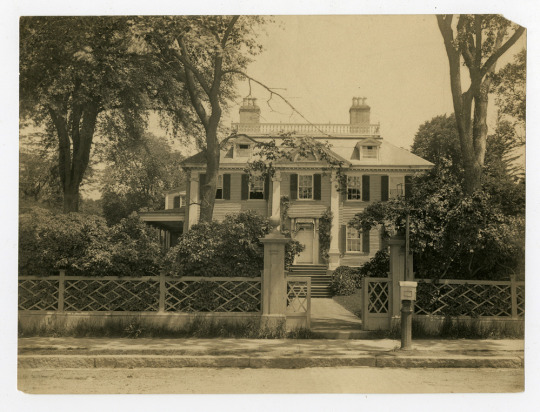
South facade of Longfellow House taken from outside fence on Brattle Street, 1910 (National Park Service, Longfellow House-Washington’s Headquarters, Archives Number: 3008-1-1-17).
Longfellow Summer Festival
If you find yourself in Cambridge on a summer day, celebrate the history of the cultural landscape and contemporary poets and creators at the annual Longfellow Summer Festival. The festival, a tradition nearly as old as the park itself, brings music and poetry alive at the Longfellow House on Sunday afternoons through August.
- For the schedule of upcoming events: 2019 Summer Festival
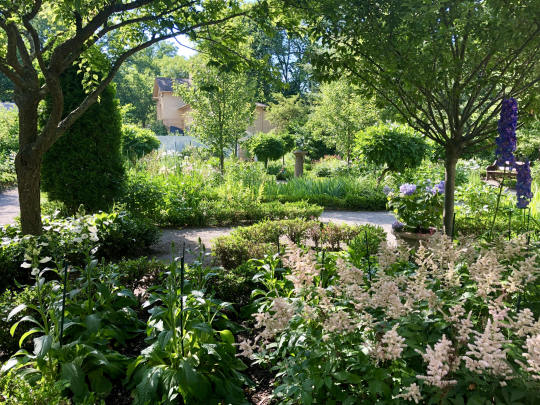
Garden in bloom at Longfellow House - Washington’s Headquarters NHS (NPS).
Learn More
- Longfellow House - Washington’s Headquarters National Historic Site Digital Archive
- Longfellow House - Washington’s Headquarters Landscape Cultural Landscape Inventory
- Cultural Landscape Report: Longfellow National Historic Site, Volume 1, Site History and Existing Conditions
- Cultural Landscape Report: Longfellow National Historic Site, Volume 2, Analysis of Significance and Integrity
- Plan Your Trip: Longfellow House - Washington’s Headquarters National Historic Site park website
- What are cultural landscapes?
*Thanks to the Longfellow House - Washington’s Headquarters NHS and others for help preparing this story!*
[1]Henry Wadsworth Longfellow Journals, Cambridge, May 20, 1838, Houghton Library, Harvard University, Cambridge, as cited by Evans in Cultural Landscape Report for Longfellow National Historic Site, Volume 1: Site History and Existing Conditions, 1993, 33.
[2] Henry Wadsworth Longfellow to Ferdinand Freiligrath, November 24, 1843, as cited by Luzader in Historic Structures Report, Longfellow House: Historical Data, 1974, 23.
Post link
Reading the Landscape
This month, we are celebrating a few of the authors, journalists, and poets associated with places that we now know as part of the National Park System. The NPS helps to preserve the legacy and perspective of writers through park cultural landscapes, allowing us to envision the places in which their words were imagined.
The NPS preserves places that are associated with the literary contributions of specific individuals, like John Muir National Historic Site andEdgar Allan Poe National Historic Site, but literary discoveries are not limited to those parks.

John Muir, ca. 1910 (NPS / JOMU 3520)
Some of these written expressions are our first introduction to a place, leading us to it or reflecting the historic character of a park cultural landscape. Others reveal the author’s unique relationship to those surroundings. Sometimes, the landscape acts as the entryway to discover the writing, giving dimension to the words.
Whether you are planning summer reading or a summer road trip, we hope you find new places to explore in our landscapes of literature mini-series.
Follow along, catch up, or add you own favorites with #literarylandscapes.
Featured:
- Adolph Murie: Wildlife Biologist, Conservationist (Denali National Park & Preserve)
- Writings of John Muir (Sierra Club)
Post link
50 Years Since Stonewall
Located in New York City’s Greenwich Village, Stonewall National Monument is a National Park Service site dedicated to a key turning point in the modern lesbian, gay, bisexual, transgender, and queer civil rights movement.
On June 28, 1969, patrons, employees, and police clashed during a raid on the Stonewall Inn. The confrontation spread into the neighboring streets and adjacent Christopher Park. The days-long uprising marked a significant moment in the struggle for LGBTQ rights, providing momentum for the movement well beyond the streets of New York City. Within two years, gay liberation groups were established in almost every major city across the U.S.
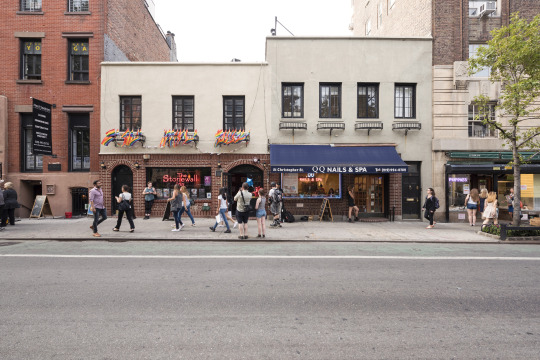
The Stonewall Inn in 2016 (NPS / Schenck)
The National Park Service is committed to telling the history of all Americans in all of its diversity and complexity.
- Discover more about LGBTQ heritage with NPS resources
- Stonewall National Monument: Rising for Equality - Step into the landscape (revisiting a 2017 article)
- What are cultural landscapes?
Post link
Parterre Planting
In 2010, the Falling Gardens at Hampton National Historic Site were rehabilitated to reflect their historic configuration. The six parterres that comprise the Falling Gardens were re-defined on the turf-carpeted terraces and replanted to represent circa-1867 planting schemes.
The garden rehabilitation helped evoke the grandeur of the historic landscape, which had fallen into disrepair by the mid-1900s with missing and overgrown vegetation.
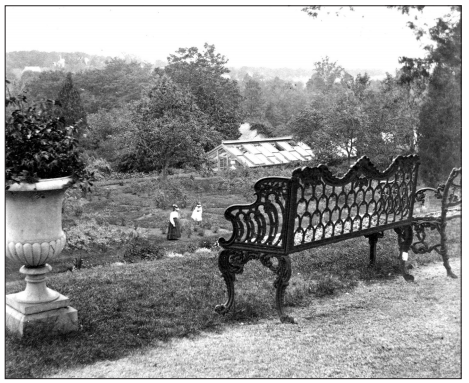
The Falling Gardens and Greenhouse #2 from the Great Terrace, looking southwest, 1872 (NPS/HAMP 3493, in Cultural Landscape Report).
The work didn’t end there, however.
Annuals are planted in the parterres each spring. This year, park staff, a summer work crew of 6 people, and volunteers planted 3,398 plants over a 2-week time period.
Want to see more of the 2019 parterre planting at Hampton National Historic Site?
(Recorded by and shared with permission of Tim Ervin, via Flickr.)

How do Cultural Landscape Reports inform landscape preservation?
Discover history, plant lists, before and after photos of the Falling Gardens, and more about Hampton National Historic Site cultural landscape :
- Cultural Landscape Report, Volume I (Site History, Existing Conditions, Analysis and Evaluation)
- Cultural Landscape Report, Volume II (Treatment and Record of Treatment)

The Falling Gardens and Greenhouse #2, c. 1935 (NPS/HAMP 19240, in Cultural Landscape Report).
Post link
Cultural Landscape Preservation
It’s already the end of May, which means that Preservation Month is coming to a close. Here are just a few ways to continue exploring cultural landscape preservation in the National Park Service:
You can also find access to the Integrated Resource Management Applications (IRMA) Portal there, an NPS-wide repository for documents, publications, and data sets related to natural and cultural resources of the National Park Service. The cultural landscape documents in this growing collection contain history, analysis, and treatment recommendations to support the management of cultural landscapes.
These videos highlight preservation projects in various park cultural landscapes, revealing how management documents (like Cultural Landscape Reports) guide preservation treatment that can impact the experience of historic places.
Keep celebrating preservation all year!
Post link
Beautification: A Legacy of Lady Bird Johnson
“The environment after all is where we all meet; where we all have a mutual interest; it is the one thing all of us share. It is not only a mirror of ourselves, but a focusing lens on what we can become.”
- Lady Bird Johnson, “Speech at Yale University,” (New Haven, Connecticut, October 9, 1967).
As a champion of conservation efforts and environmental causes, Lady Bird Johnson initiated the Beautification Project to improve the quality of life for residents of Washington, D.C. through the renewal and improvement of public spaces. The environmental and aesthetic improvements of Beautification included tree-lined avenues, floral displays, design guidelines, improvements to pedestrian circulation, renovation of historic buildings, and litter clean-up.

Beautification Luncheon. Foreground L-R: Sec. Stewart Udall, Lady Bird Johnson, Laurance Rockefeller looking at an architectural model of the Washington DC Mall area during a Beautification Luncheon in the White House State Dining Room. The 1967 luncheon in part discussed proposed changes to the Mall (Robert Knudsen, LBJ Library, White House Photo Office collection (C5209-33).
Beautification was far more complex than a garden club project.
According to Johnson, “Though the word beautification makes the concept sound merely cosmetic, it involves much more: clean water, clean air, clean roadsides, safe waste disposal and preservation of valued old landmarks as well as great parks and wilderness areas. To me…beautification means our total concern for the physical and human quality we pass on to our children and the future.”

Lady Bird Johnson and two young people standing among blooming white azaleas during a Beautification Tour of Washington, D.C. (Robert Knudsen, LBJ Library, C1754-25).
Lady Bird Johnson selected her adopted hometown of Washington, D.C. as the pilot city to show the nation how Beautification could enhance the overall quality of life. The city afforded Johnson the perfect opportunity to showcase the potential of the program. The prominence of Washington, D.C. garnered national visibility to highlight the progress of the effort.
“The Story of Mrs. Lyndon B. Johnson’s Beautification Program” is from the LBJ Library moving picture collection created by the White House Naval Photographic Unit, aka the Navy Films. The films consist of monthly reports on the activities of President and Lady Bird Johnson from 1963-1969. This edited content is from the LBJ Library audiovisual archives.
Lady Bird Johnson formed a coalition of both public and private entities, involving Secretary of the Interior Stewart Udall, local officials, planners, landscape architects, citizens, and school groups.

Spring brings color to the trees on the East Potomac Golf Course at Hains Point in Washington, D.C. (NPS Photo).
Lady Bird’s legacy is still evident in Washington, D.C. today.
Daffodil drifts soften the hillsides of the Rock Creek and Potomac Parkway, as well as the George Washington Memorial Parkway and Lady Bird Johnson Park. Cherry trees line the road of Hains Point, sprays of blossoms frame views in the monumental core, and the Floral Library near the Washington Monument bursts with color in the springtime. Street trees shade avenues throughout the city, and efforts to clean the city’s waterways have continued into the present.
Find more in the full article at nps.gov: Beautification: A Legacy of Lady Bird Johnson
Post link
Appomattox Court House Village, April 9
On April 9, 1865, the surrender of the Army of Northern Virginia in the village of Appomattox Court House, Virginia signaled the end of the Civil War. The landscape at Appomattox Court House National Historical Park marks the beginning of the country’s transition to peace and reunification following four years of war. The rural landscape is also significant in areas of architecture and conservation.
In commemoration of the 154th Anniversary of Lee’s surrender to Grant, learn more about the park’s cultural landscape through a new video and the recently published Cultural Landscape Report:
- Discover the Appomattox Court House Village landscape through the latest video from the Olmsted Center for Landscape Preservation
- TheCultural Landscape Report Treatment Implementation Plan guides long-term management and preservation decisions for this historically significant landscape.
- Visit the Appomattox Court House National Historical Park website to learn more and plan your visit
- More information about the Appomattox Court House Landscape

Thereconstructed McLean House at Appomattox Court House, the site of the surrender on April 9, 1865 (NPS Photo).
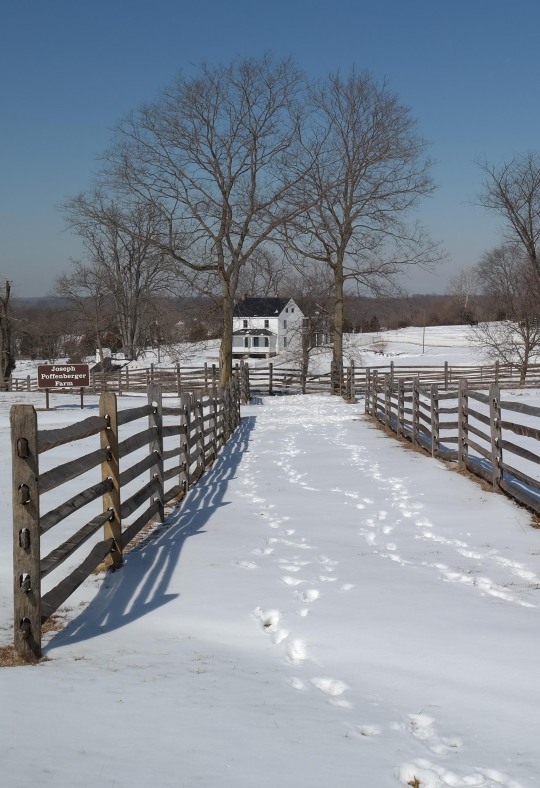
We’re back!
Following the enactment of the continuing resolution, the Park Cultural Landscapes Program has resumed regular operations. We’re inspired by the dedication of employees, volunteers, partners, and contractors, and we are honored to continue sharing the beauty and wonder of America’s public lands.
For the latest information on accessibility and visitor services at a specific park, visit the park website or nps.gov.
Photo: Joseph Poffenberger Farmstead at Antietam National Battlefield in 2014 (NPS Photo)
Seeing a grizzly in the north range of Denali National Park is always a fun sight. It is a rare occurrence to see one of these guys, but fortunately I was bale to capture him looking back at us as we slowly drove by.
Post link


